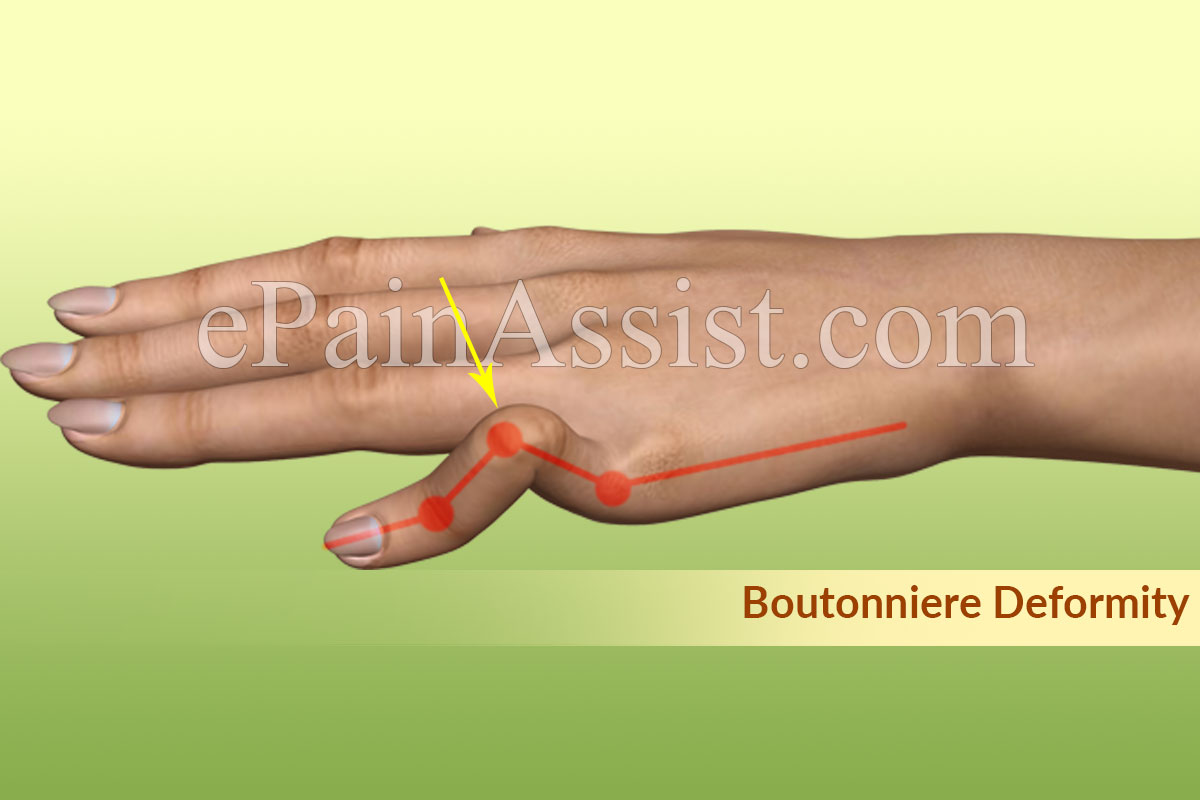Fingers consist of many tendons which assist with stretching and bending processes. The tendons flow along the top and sides of the fingers. The central slip i.e. the bone present at the middle of the finger sticks with the tendons located on the top of the finger. In case of the injury to this tendon, the finger loses its capacity and strength to straighten itself.
Boutonniere deformity(1) is a condition in which the injury occurs to the tendons of the finger preventing the finger to straighten out completely. This results in bending down of the middle joint and the tip of the finger backwards. A cut on the top portion of the finger such as with a knife or sharp object can separate the central slip from its attachment to the bone. The tear as a result of such an injury resembles a buttonhole hence the French term Boutonniere. Boutonniere deformity must be treated as soon as possible as the adverse affects of this type of injury may force the finger to become permanently deformed, which may also damage its function.

Causes of Boutonniere Deformity
- Boutonniere deformity is usually a result of forceful blow to a bent finger.
- A cut on the top portion of the finger such as with a knife or sharp object, can separate the central slip from its attachment to the bone.
- Individuals suffering with rheumatoid arthritis(2) could be at higher risk for Boutonniere deformities.
- Generally a direct blow to the middle bone of the finger may also cause boutonnieres deformity.
- The joint of the middle finger may forcefully bend backwards, which may result in tearing of the extensor tendon.
- Severe burns to the digits could also result in boutonniere deformity.
- Thumb suffering with boutonniere deformity may also influence metacarpophalangeal joint.(3)
- Boutonniere deformity could also result from sports injuries, particularly those related to throwing and catching a ball such as basketball and football.
Signs and Symptoms of Boutonniere Deformity
Signs of boutonniere deformity can either be seen immediately after the injury to the finger or several days after the injury.
- The middle joint of the finger could not be straightened.
- The tip of the finger could not be bent.
- Pain and swelling could also be felt at the top of the fingers middle joint.
- Pain at the onset of injury.
- Tenderness may also be felt on the top of the middle bone of the finger.
- Swelling at the onset of injury.
Treatment for Boutonniere Deformity
Boutonniere deformity needs to be treated as early as possible in order to prevent loss of full range of motion and retain full functioning of the affected finger.
Nonsurgical Options
- Nonsurgical treatment is usually the preferred mode of treatment. Treatment May Include:
- Anti-inflammatory drugs may be recommended.
- Cortisone injection is really helpful.
- Splinting, bracing and rest.
- Protective tapes.
- Activity modification and training.
- Appropriate plan for return to activity.
Surgical Options for Boutonniere Deformity
- Surgery may be recommended in some severe cases where conservative or nonsurgical treatment may not be helpful.
Following Factors Play A Major Role In Determining If Surgery Is Warranted:
- Boutonniere deformity that is a result of rheumatoid arthritis.
- Cases where the tendon is severed.
- Displacement of a large bone fragment from its actual position.
- If splinting is not effective.
In all the above cases, surgery may help in reducing the pain and improving the function of the digit, but complete recovery cannot always be expected. Surgery involves risks of infection, bleeding, neurovascular injury(4), as well as hardware failure.
If left untreated for more than three weeks, treatment of boutonniere deformity may not yield the desired results.
Exercises for Boutonniere Deformity
Physical therapy involves stretching and flexibility exercises to improve range of motion and strength of the affected digits.
Investigations for Boutonniere Deformity
A thorough physical examination is performed by straightening the affected finger and bending its tip. X-rays may be done to investigate for any broken bones that are attached to the central slip of the tendon.
- Boutonniere Deformity – StatPearls – NCBI Bookshelf (nih.gov)
- Rheumatoid Arthritis (RA) | Arthritis | CDC
- Basal thumb arthritis (nih.gov)
- Fractures – Hand (health.wa.gov.au)
